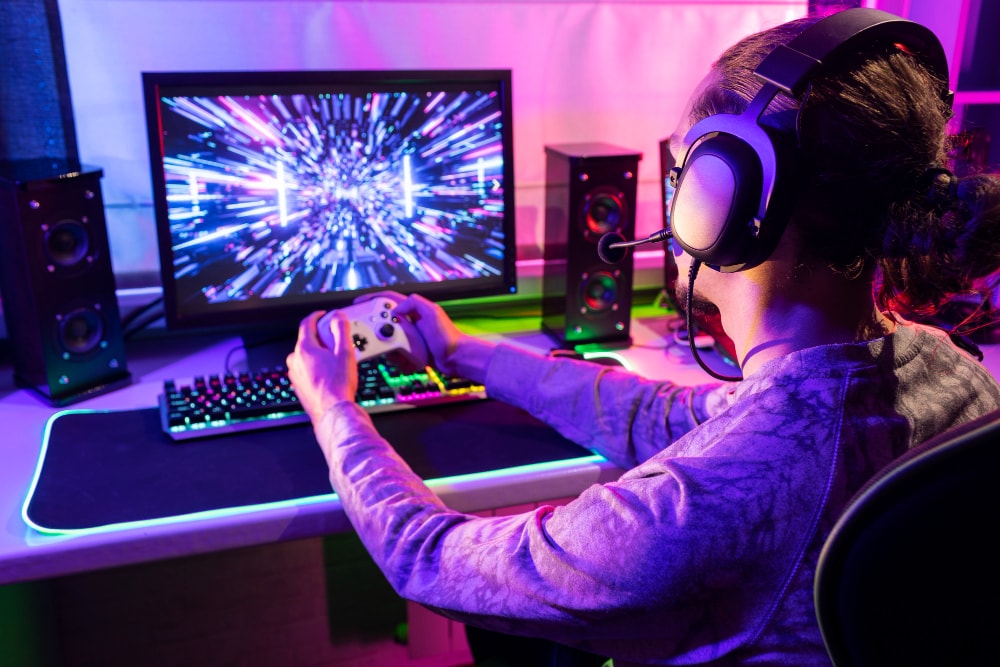
Many gaming content creators rely on in-game music for their gaming content. But that comes with some copyright restrictions that can lead to demonetization or content takedowns. For a streamer or YouTuber, this is risky.
Custom video game background music without copyright changes the game (caught that?). It allows creators to control the mood of their videos while staying safe from copyright claims. The right audio track can influence viewers’ emotions, making a scene feel more exciting, tense, or relaxing. It can also reinforce your brand as a creator, making your videos more recognizable.
In this article, you'll learn the most suitable soundtracks for various games. You will also know where to find good background music for your gaming videos and how to add them to your video content while editing.
In this article
- Popular Kinds of Video Game Background Music to Try
- For Mobile Gamers: Add Background Music to Mobile Gaming Videos
- For PC Gamers:Add Background Music to Gaming Videos on PC
- How to Balance Video Game Background Music and In-Game Sounds
- Bonus: The Legal Side of Using Popular Music in Your Gaming Streams
Part 1: Popular Kinds of Video Game Background Music to Try

The type of game video background music you choose can completely change your gameplay video. Some tracks create excitement and add to the intensity of the game. At the same time, others bring relaxation or feelings of nostalgia.
Here are some popular kinds of video game background music that work well for different types of game content.
FIFA-Style Sounds
FIFA’s background music creates a fun and energetic gaming atmosphere. It is lively and fast-paced and often features selectronic, indie rock, or pop elements. If you're making football-related gaming content, FIFA-style music is a great choice.
Example Track:
Epic Cinematic Sounds
Epic sounds are often used in RPGs or advertising & battle games. They have dramatic build-ups and powerful melodies. These tracks work well for intense combat, boss fights, or story-driven games. They usually include slow buildups leading to powerful climaxes.
Example Track:
Lo-Fi & Chill Gaming Beats
For casual games, open-world explorations, or strategy games, lo-fi beats match the vibe. They help create a cozy atmosphere without distracting from the gameplay.
Example Track:
Retro & 8-Bit Sounds
Certain old-school or indie games are more fun and immersive with 8-bit music. They add a nostalgic touch and mimic classic console music, making them perfect for retro-style games.
Example Track:
High-Speed Racing Sounds
Racing games need fast-tempo electronic music or rock tracks to match the adrenaline rush that comes with playing. High-energy beats enhance the sense of speed and competition.
Example Track:
Background Music for Different Game Genres
Choosing the right background sound for games depends on the type of game you’re playing. Here’s a guide to help you match music styles with different game genres:
| Game Genre | Game Examples | Suggested Background Sounds | Music Genre |
| Action Games | Call of Duty, Apex Legends, Valorant, etc. | Intense battle music, fast-tempo beats, heavy drums, and bass for intense firefights. | Orchestral, Rock, Electronic |
| Adventure & Fantasy Games | Zelda, Skyrim, The Witcher, etc. | Mysterious, cinematic music. | Ambient, Fantasy, Orchestral |
| Racing Games | Need for Speed, Forza, Mario Kart, etc. | High-energy electronic, rock riffs | EDM, Rock, Synthwave |
| Horror Games | Resident Evil, Phasmophobia, Silent Hill, etc. | Dark, eerie suspense tracks | Dark Ambient, Minimalist Horror |
| Casual & Simulation Games | Stardew Valley, Animal Crossing, Klondike Solitaire, etc. | Soft piano, lo-fi chill beats | Lo-Fi, Jazz, Acoustic |
| Retro Games | Undertale, Celeste, Hollow Knight, etc. | Emotional, nostalgic, 8-bit chiptune melodies | Chiptune, Synthwave |
Part 2: For Mobile Gamers: Add Background Music to Mobile Gaming Videos

Adding video game background music to your videos can make your mobile gaming content more engaging. One of the best tools for this is Wondershare Filmora, a user-friendly video editing app with built-in features for adding and adjusting background music.
Step-by-Step Guide to Adding Background Music for Games in the Filmora Mobile Version
Here's how to use background music for games with Filmora on your phone.
- Step 1: Open Filmora on your PC and import your game video.
- Tap New Projectand select your recorded game footage from your computer.

- Step 2: Add background music.
- Click on Audioin the toolbar.
- Click on Musicto choose from Filmora’s built-in music library. The music clip will automatically match the length of the gameplay video on the timeline.
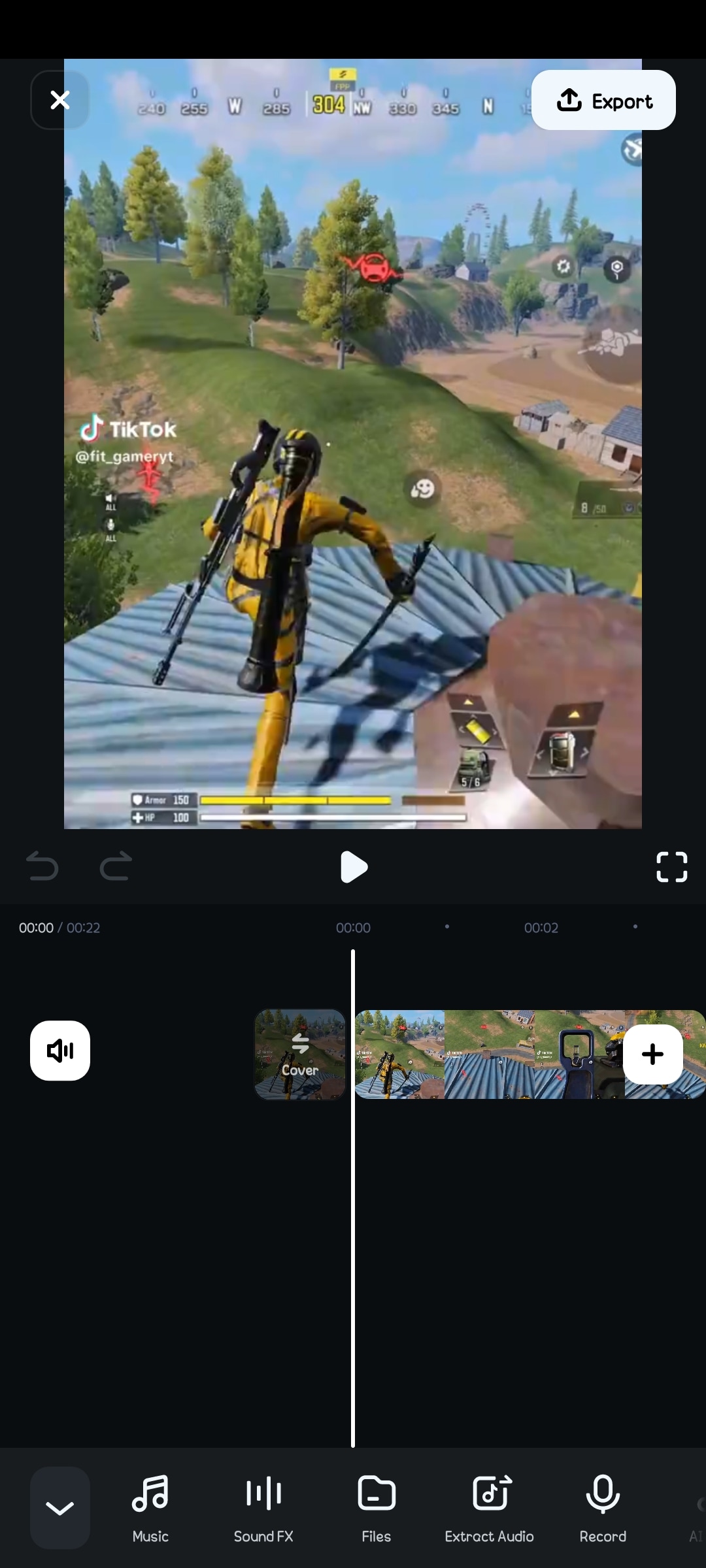
- Step 4: Fine-tune the audio.
- Use the Fade In/Fade Outfeature for a smoother transition.
- Adjust the volumeto ensure the background music doesn’t overpower the game sounds.
- If needed, lower or mute the original game audio to avoid distractions.
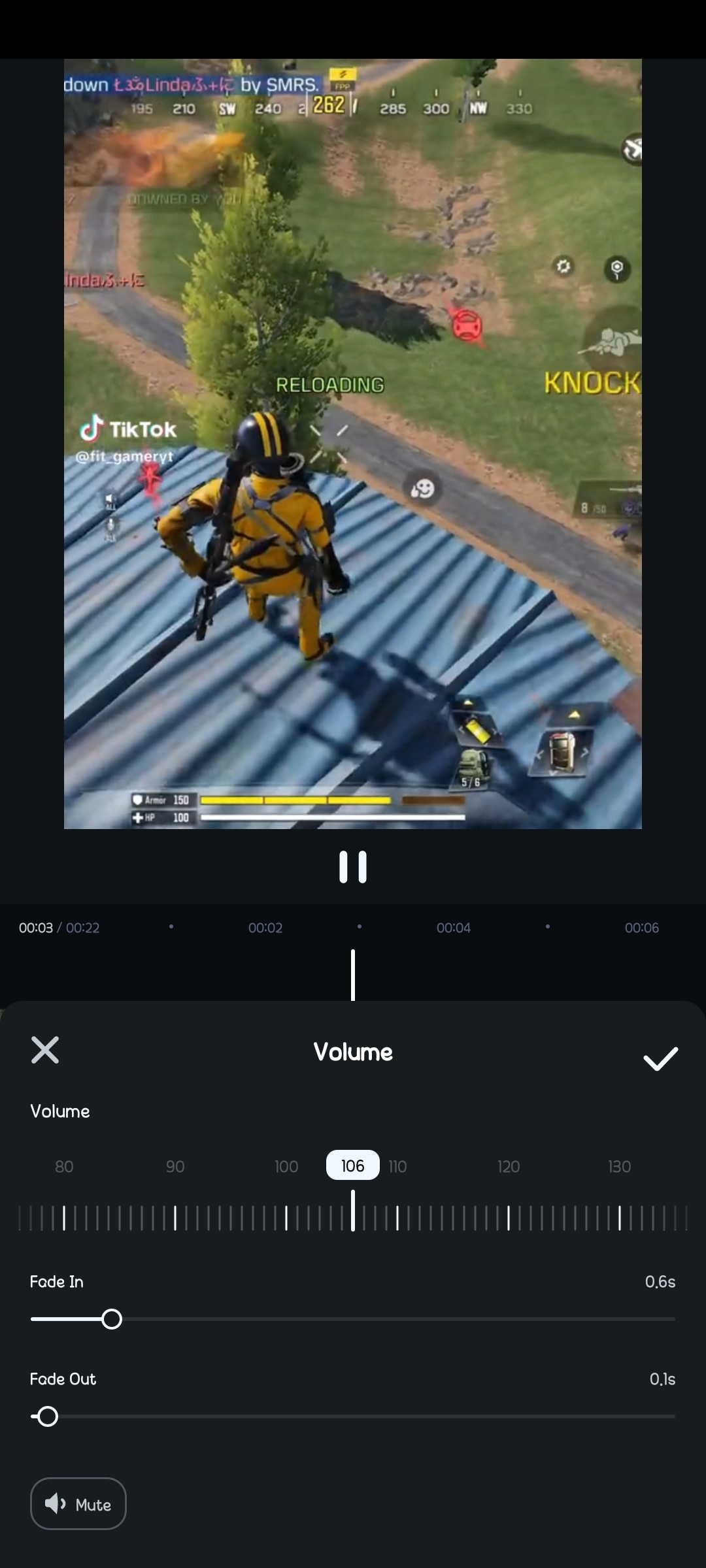
Part 3: For PC Gamers: Add Background Music to Gaming Videos on PC
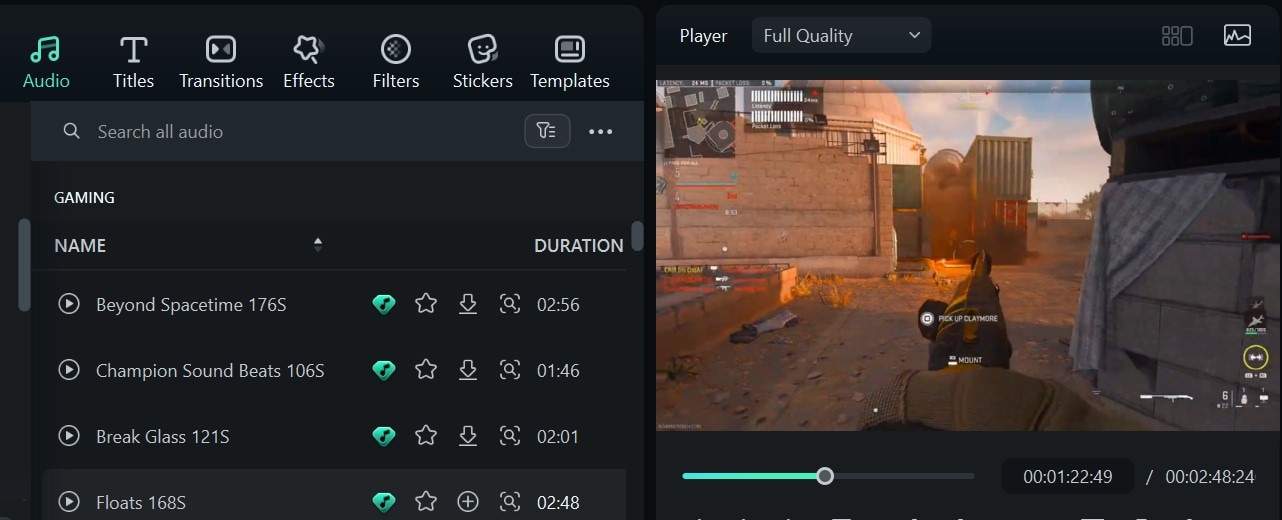
Here’s how to add background music to gaming videos on PC using Filmora.
- Step 1: Open Filmora on your PC and import your game video.
- Launch Filmoraon your PC.
- Click New Projectand select the resolution/frame rate based on your video.
- Drag and drop your recording into the timeline.
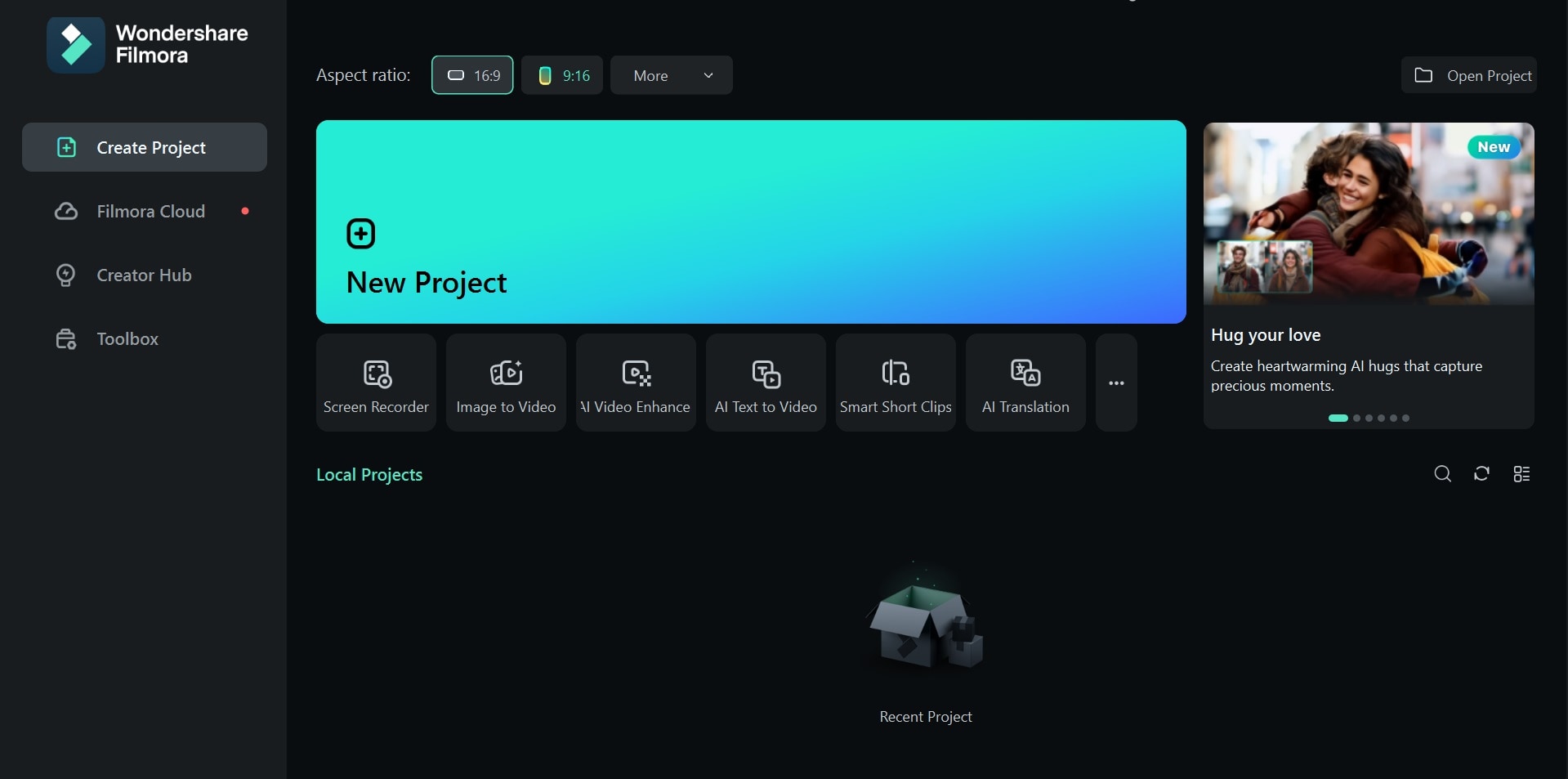
- Step 2: Add background music.
- Go to Audiooon the toolbar.
- Go to Universal Music > Gamingand choose from Filmora’s built-in music library.
- Drag the music file to the timeline and place it below your video.
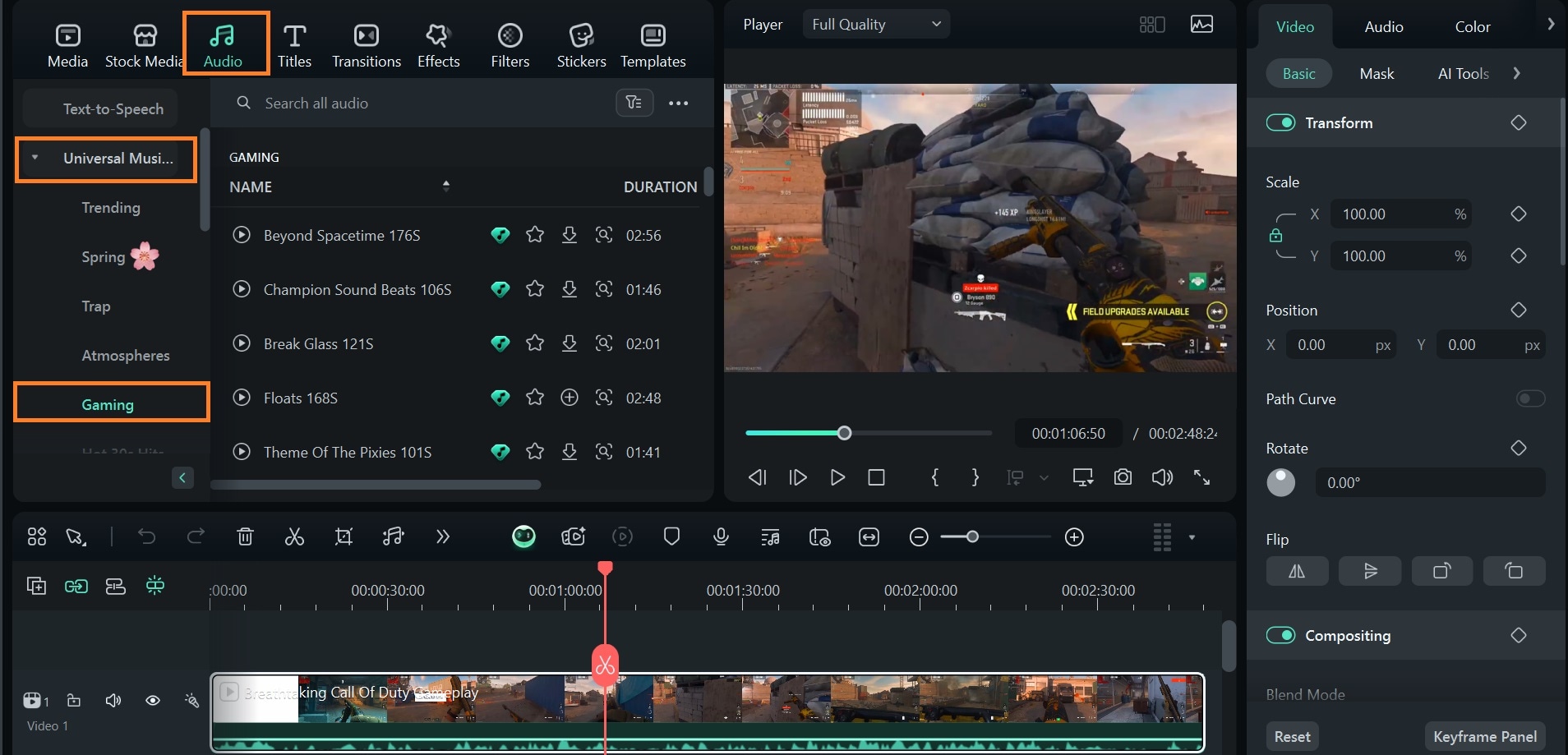
- Step 3: Adjust the music timing and length.
- Trim or split the music track to fit the gameplay.
- Drag the edges of the audio track to adjust its duration.

- Step 4: Fine-tune the audio
- Click on the music track to open the audio settings panel.
- Go to Transitions > Audio Transitions to use the Fade In/Fade Out feature for a smoother transition.
- Adjust the volumeto ensure the background music doesn’t overpower the game sounds. If needed, lower or mute the original game audio to avoid distractions.
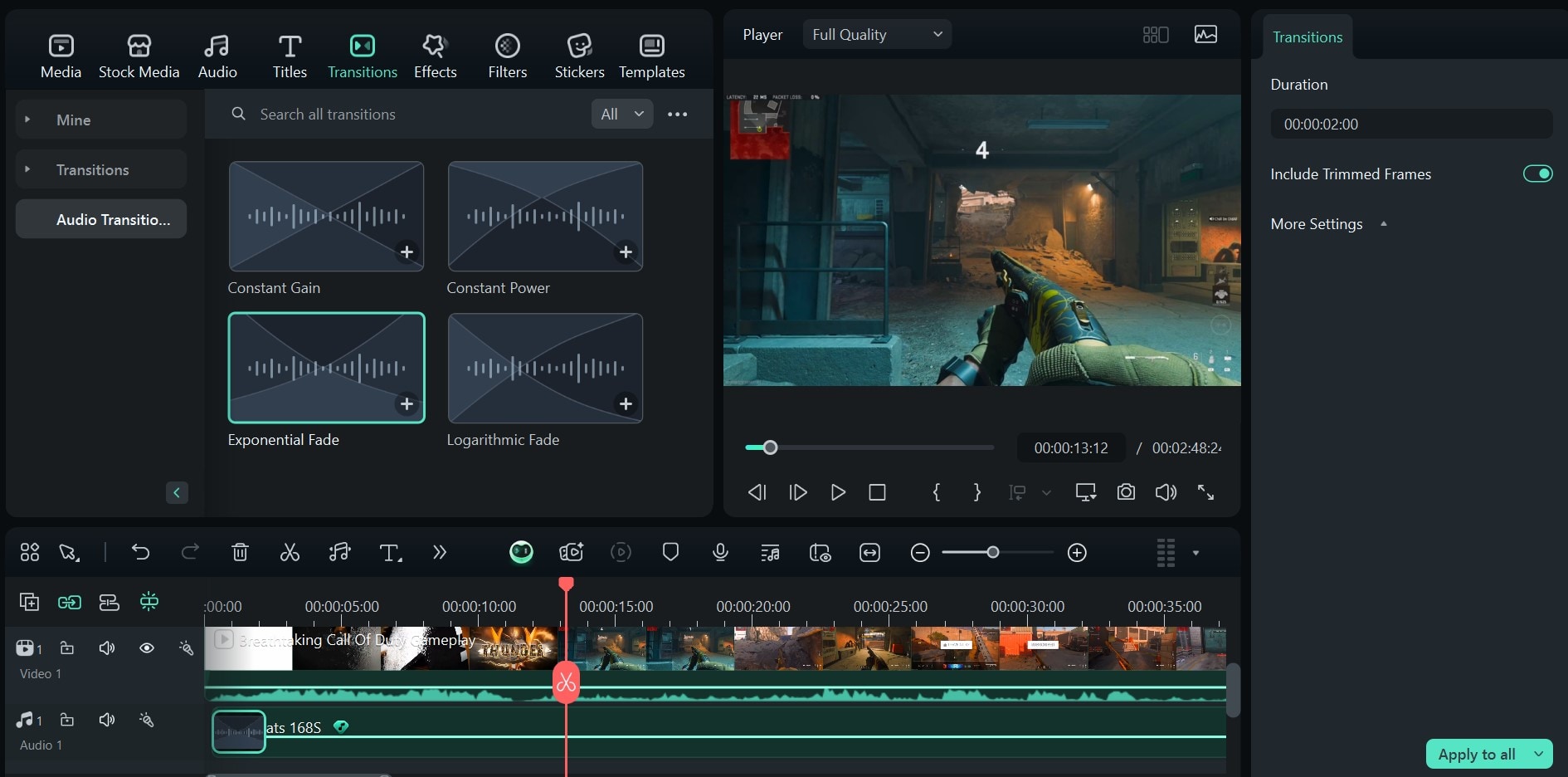
Part 4: How to Balance Video Game Background Music and In-Game Sounds

Adding background music for gaming videos is great, but if it’s too loud, it can overpower in-game sounds or dialogue. Proper audio balancing ensures that music enhances the experience without distracting viewers from gameplay.
Filmora allows you to adjust audio levels effectively in many ways.
1. Volume Balancing
Before making any advanced adjustments, start by setting the right volume levels for each audio source. Follow these steps.
- Step 1: Select your gameplay audio track in the timeline.
- Click on the Audio tab to open the volume controls.
- Adjust the volume slider to lower or increase in-game sound.
- Do the same for the background music track to find the right balance.
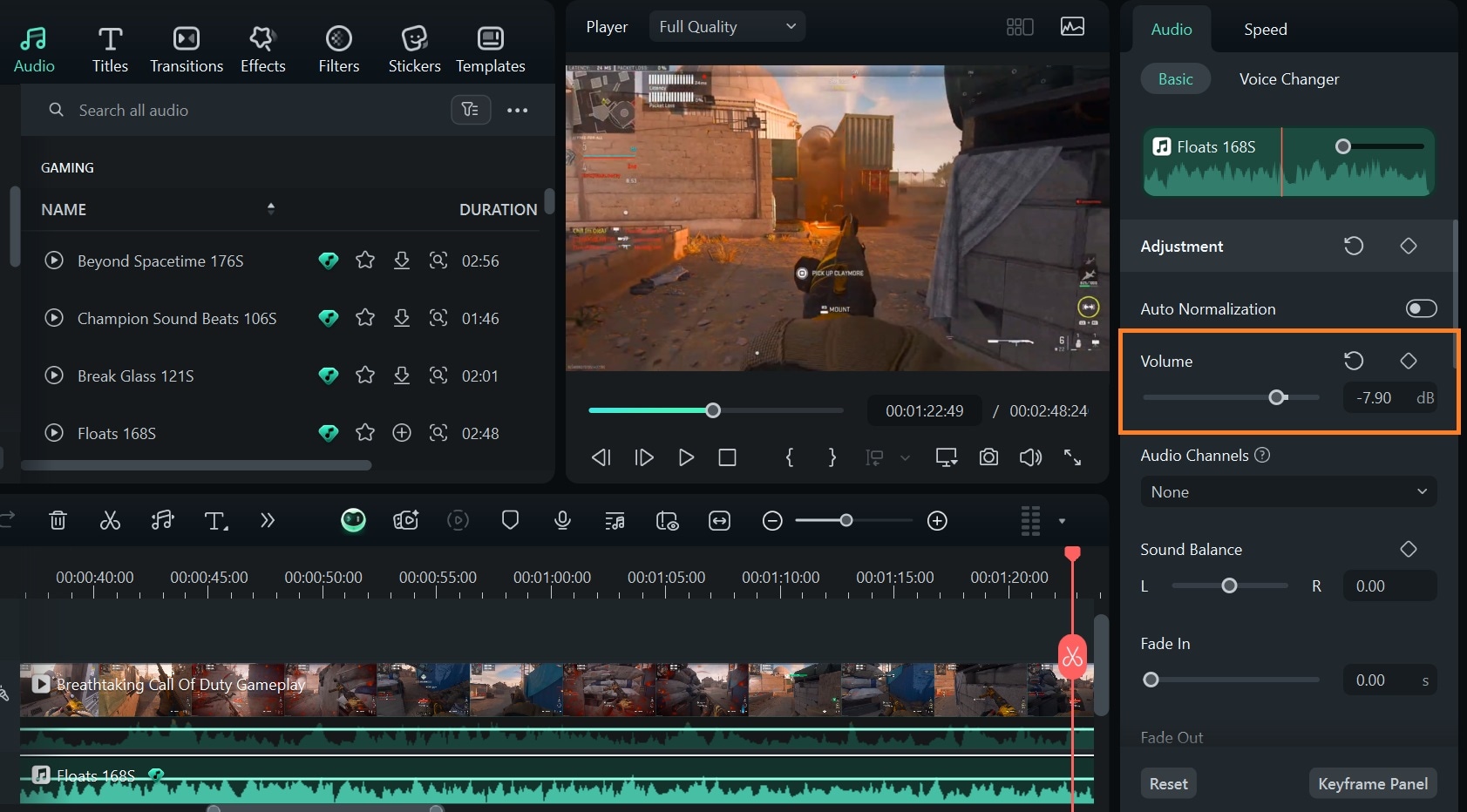
Note: Keep in-game dialogue and important sound effects slightly louder than background music.
2. Using Audio Ducking (Lowering Music When Characters Speak)
Audio Ducking is a feature in Filmora that automatically lowers background music when in-game dialogue or key sounds play.
How to Use Audio Ducking with Game Video Background Music
- Step 1: Click on the gameplay audio track in the timeline.
- In the Audio editor panel, check “Ducking” to lower other sounds when dialogue or effects are detected.
- Adjust the ducking strength to control how much the music volume drops.
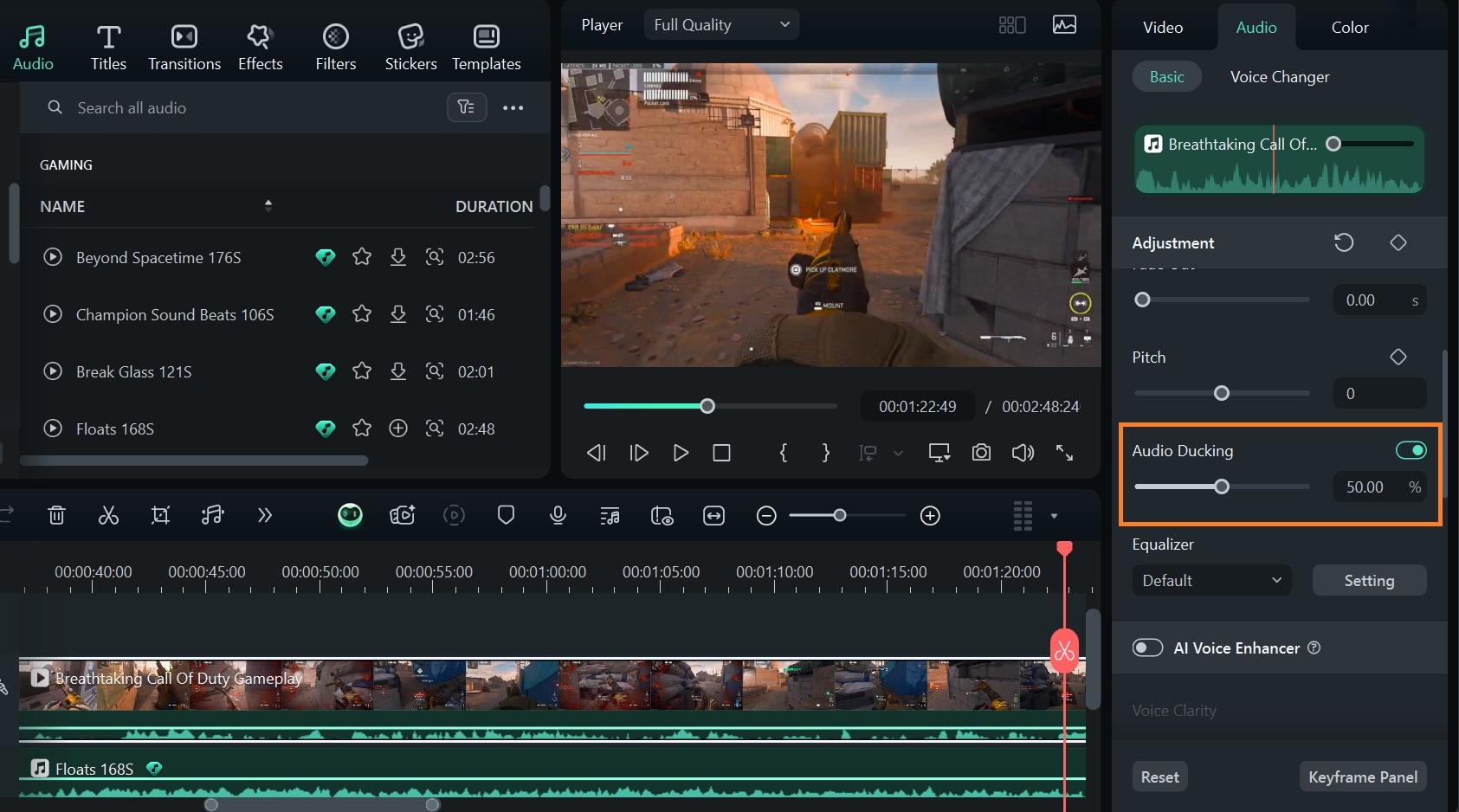
3. Choosing the Right Equalization (EQ) Settings
Equalization lets you adjust the frequency balance of your audio to make everything sound clearer.
How to Adjust Equalizer Settings on Filmora
- Step 1: Click on the background music track in the timeline. Open the Equalizer settings from the Audio tab.
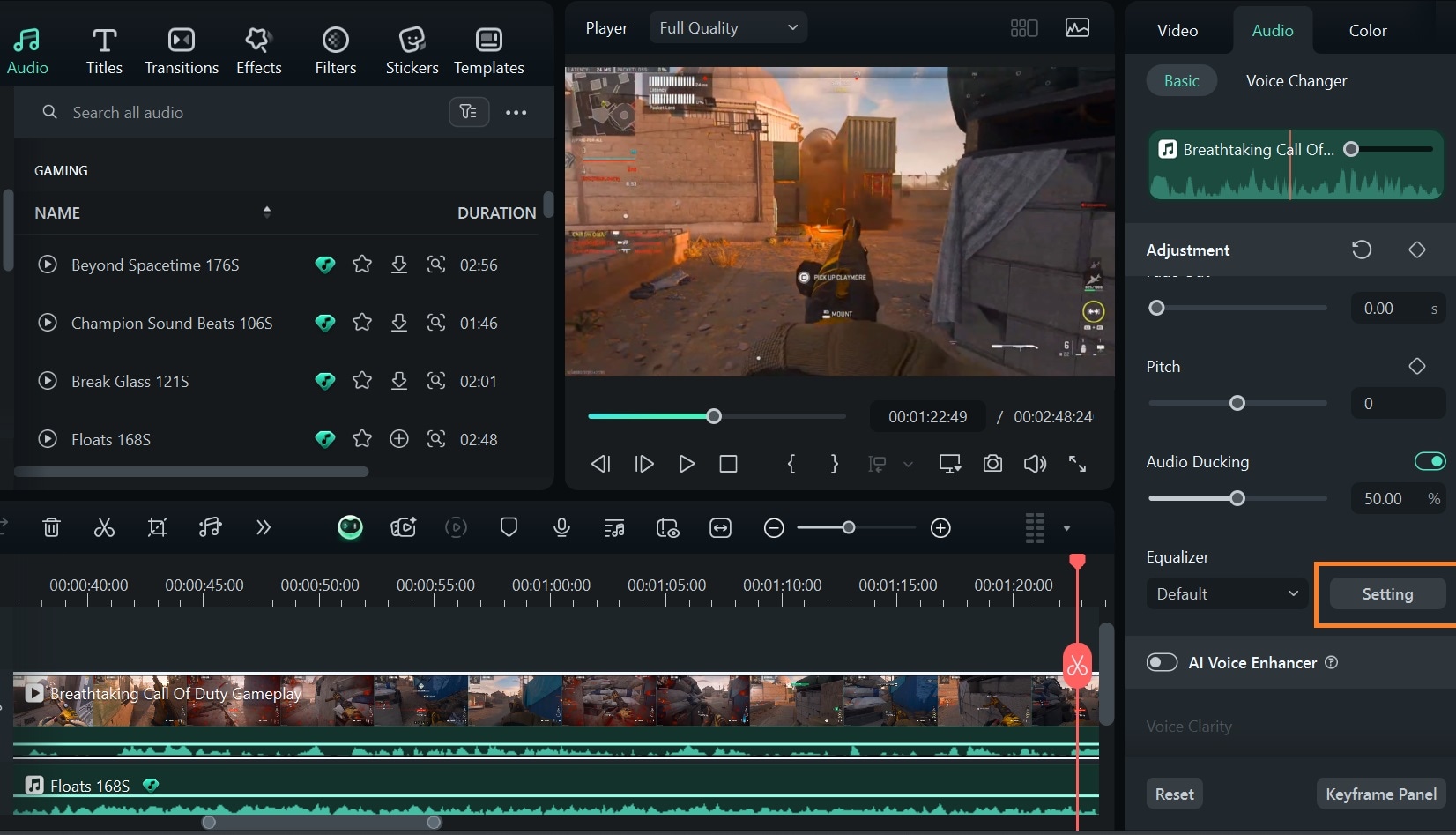
- Step 2: Choose presets like Soft or manually adjust frequencies.

Best EQ Adjustments for Background Music for Gaming
- Reduce the bass in the background music if it clashes with the deep in-game sounds.
- Boost mid-range frequencies (500Hz–2kHz) to enhance dialogue clarity.
- Slightly lower high frequencies to avoid sharp or piercing sounds.
4. Avoiding Having Too Many Sounds at Once
Too many overlapping sounds can make a video feel messy. To keep the audio clean:
- Limit the number of active sound sources (game audio, music, voiceover, etc.).
- Use fades and crossfades between music transitions.
- Avoid constant loud music—give your video ‘silent moments’ intermittently.
Part 5: The Legal Side of Using Popular Music in Your Gaming Streams

Many creators think using trending background music for gaming videos will make them more engaging. However, using mainstream music without proper licensing can lead to serious copyright issues.
Let’s break down the risks and explore safe alternatives.
Why You Can’t Use Mainstream Music in Gaming Videos
Most popular songs are protected by copyright laws, meaning you need permission from the owner—record label or artist—to use them. Even if you credit the artist or use only a short clip, it still counts as copyright infringement.
Note:
- Even if your video is non-monetized, it can still get flagged.
- There’s no official safe duration rule. Even if you use less than 30 mins, it's still illegal.
- It doesn't matter if you credit the artist; copyright claims are based on ownership, not acknowledgment.
What Happens If You Use Copyrighted Music?
If you upload a gaming video with copyrighted music, the platform's Content ID system (YouTube, Twitch, Facebook) will detect it and take action:
- You lose ad revenue, and the money goes to the copyright holder.
- Your video’s audio may be muted or taken down.
- Repeated offenses on platforms like YouTube can lead to channel suspension or permanent bans.
Safe Alternatives: How to Avoid Copyright Issues
To protect your gaming content, use only music licensed for public use. Here are safe alternatives:
- Royalty-free music – No ongoing fees, just a one-time license purchase
- Stock music libraries – Many tools like Filmora offer pre-cleared tracks for content creators.
- Gaming soundtracks with open licenses – Some indie game developers allow content creators to use their music freely.
Since you use Filmora, you already have access to built-in royalty-free music within the software.
Conclusion
Here are several background sound options for games, but most trendy options come with copyright issues that may be risky for a creator’s page. Tools like Filmora provide royalty-free music options for every game type. You can control volume, enable audio ducking, and adjust equalizer settings, making it easy to fine-tune your audio for a professional touch on your phone and your computer.
By following the guidelines in this article, you can create high-quality gaming content with the perfect soundtrack—enhancing your videos while staying within legal boundaries.



 100% Security Verified | No Subscription Required | No Malware
100% Security Verified | No Subscription Required | No Malware


